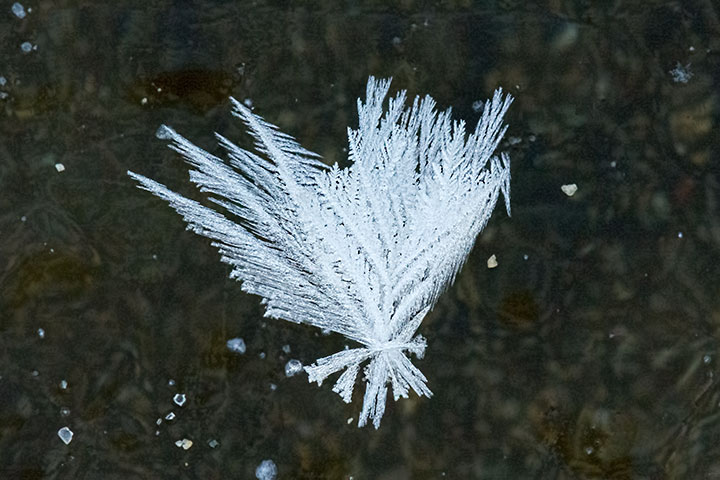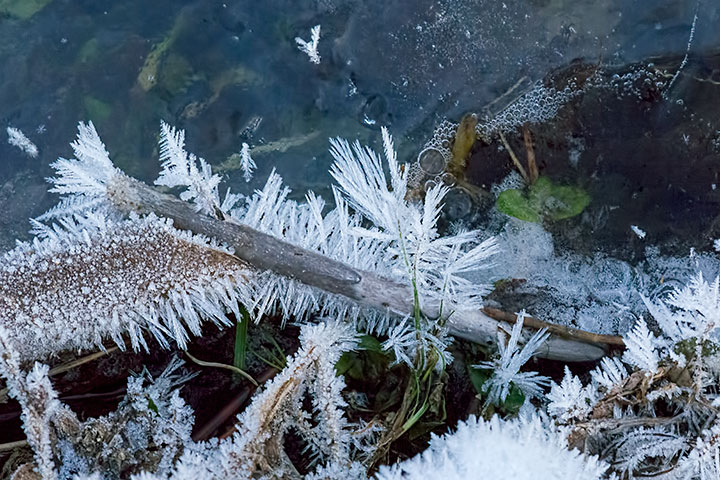After first spotting frost flowers along the shore of Kootenay Lake in 2009, I had to wait five years for the next sighting. Now only a year later, I have seen them again.
In fairness, I did not find them; my grandson, Finn, did that. As with some wild orchids last summer, having told him about them, he went out and found some—ah, to see through the eyes of a child.
In both appearance and process, frost flowers differ from the familiar hoar frost. The latter occurs when vapour condenses onto a cold surface in a process that involves vapour cooling. Hoar frost is characterized by a continuous covering of frost. The formation of frost flowers involves a warm surface and a distinctly different condensation mechanism known as vapour mixing. It is characterized by discrete flowers that form above a warm surface.
The background is the frozen surface of a creek through which the creek bottom is visible. The surface may be cold, but it is warmer than the air above it where the vapour mixing occurs.
Anything sticking into the region where the warmer vapour mixes with the colder vapour can serve as a nucleus for the formation of frost flowers, as these sticks and leaves illustrate.
My favourite shot of the frost flowers on the ice-covered creek was one taken by Finn. It shows three tightly grouped flowers sitting above the ice.
Finn Grathwol’s image is used with permission.

Thank you for sharing these beautiful photos. I very much appreciate the explanation as to why this occurs. I must admit though, that I am partial to the third photo.
Susi, yours is an understandable bias; it is one I share.
Perfect. Thanks for this. I’m off to seek them too.
These photos are so beautiful. I have just recently discovered your site. I’m learning so much and am inspired with every posting. Thank you for sharing all this beauty Alistair.